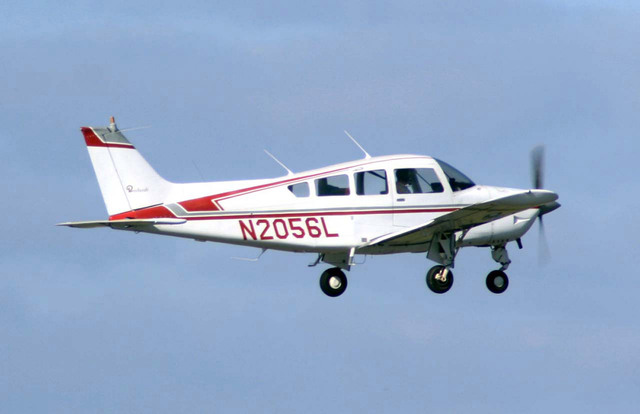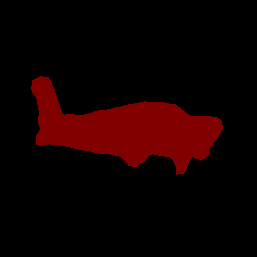באמצעות מקטעי תמונות, הם חוזים אם כל פיקסל בתמונה משויך סיווג מסוים. זאת בניגוד לזיהוי אובייקטים, שמזהה אובייקטים מלבניים וסיווג תמונות, שמדרגים את כל תמונה. סקירה כללית על פילוח תמונות דוגמה לקבלת מידע נוסף על פלחים של תמונות.
להשתמש ב-API של ספריית המשימות ImageSegmenter כדי לפרוס את מקטעי התמונות בהתאמה אישית
או כאלה שעברו אימון מראש לאפליקציות שלכם לנייד.
תכונות מרכזיות של Imagesegmenter API
עיבוד תמונות קלט, כולל סיבוב, שינוי גודל ומרחב צבעים להמרה.
הוספת תווית ללוקאל במפה.
שני סוגי פלט: מסכת קטגוריה ומסכות אבטחה.
תווית צבעונית למטרות תצוגה.
מודלים נתמכים של פילוחי תמונות
מובטח שהמודלים הבאים יתאימו לImageSegmenter
API.
מודלים בהתאמה אישית שעומדים בתאימות למודל הדרישות.
הרצת ההסקה ב-Java
מידע נוסף זמין בחומר העזר בנושא פילוח תמונות
אפליקציה
דוגמה לאופן השימוש ב-ImageSegmenter באפליקציה ל-Android.
שלב 1: מייבאים תלות ב-Gradle והגדרות אחרות
מעתיקים את קובץ המודל .tflite לספריית הנכסים הדיגיטליים של מודול Android.
שבה המודל יפעל. לציין שאין לדחוס את הקובץ.
מוסיפים את ספריית TensorFlow Lite לקובץ build.gradle של המודול:
android {
// Other settings
// Specify tflite file should not be compressed for the app apk
aaptOptions {
noCompress "tflite"
}
}
dependencies {
// Other dependencies
// Import the Task Vision Library dependency
implementation 'org.tensorflow:tensorflow-lite-task-vision'
// Import the GPU delegate plugin Library for GPU inference
implementation 'org.tensorflow:tensorflow-lite-gpu-delegate-plugin'
}
שלב 2: שימוש במודל
// Initialization
ImageSegmenterOptions options =
ImageSegmenterOptions.builder()
.setBaseOptions(BaseOptions.builder().useGpu().build())
.setOutputType(OutputType.CONFIDENCE_MASK)
.build();
ImageSegmenter imageSegmenter =
ImageSegmenter.createFromFileAndOptions(context, modelFile, options);
// Run inference
List<Segmentation> results = imageSegmenter.segment(image);
צפייה בקוד המקור
Javadoc
לאפשרויות נוספות להגדרה של ImageSegmenter.
הרצת ההסקה ב-iOS
שלב 1: מתקינים את יחסי התלות
ספריית המשימות תומכת בהתקנה באמצעות CocoaPods. צריך לוודא ש-CocoaPods מותקנת במערכת שלך. לפרטים נוספים, ניתן לעיין בהתקנת CocoaPods מדריך לקבלת הוראות.
מומלץ לעיין ב-CocoaPods מדריך מפורט הוספת Pods לפרויקט Xcode.
מוסיפים את ה-Pod TensorFlowLiteTaskVision בקובץ ה-Podfile.
target 'MyAppWithTaskAPI' do
use_frameworks!
pod 'TensorFlowLiteTaskVision'
end
צריך לוודא שמודל .tflite שבו משתמשים לצורך הסקת מסקנות
את ה-App Bundle.
שלב 2: שימוש במודל
Swift
// Imports
import TensorFlowLiteTaskVision
// Initialization
guard let modelPath = Bundle.main.path(forResource: "deeplabv3",
ofType: "tflite") else { return }
let options = ImageSegmenterOptions(modelPath: modelPath)
// Configure any additional options:
// options.outputType = OutputType.confidenceMasks
let segmenter = try ImageSegmenter.segmenter(options: options)
// Convert the input image to MLImage.
// There are other sources for MLImage. For more details, please see:
// https://developers.google.com/ml-kit/reference/ios/mlimage/api/reference/Classes/GMLImage
guard let image = UIImage (named: "plane.jpg"), let mlImage = MLImage(image: image) else { return }
// Run inference
let segmentationResult = try segmenter.segment(mlImage: mlImage)
Objective C
// Imports
#import <TensorFlowLiteTaskVision/TensorFlowLiteTaskVision.h>
// Initialization
NSString *modelPath = [[NSBundle mainBundle] pathForResource:@"deeplabv3" ofType:@"tflite"];
TFLImageSegmenterOptions *options =
[[TFLImageSegmenterOptions alloc] initWithModelPath:modelPath];
// Configure any additional options:
// options.outputType = TFLOutputTypeConfidenceMasks;
TFLImageSegmenter *segmenter = [TFLImageSegmenter imageSegmenterWithOptions:options
error:nil];
// Convert the input image to MLImage.
UIImage *image = [UIImage imageNamed:@"plane.jpg"];
// There are other sources for GMLImage. For more details, please see:
// https://developers.google.com/ml-kit/reference/ios/mlimage/api/reference/Classes/GMLImage
GMLImage *gmlImage = [[GMLImage alloc] initWithImage:image];
// Run inference
TFLSegmentationResult *segmentationResult =
[segmenter segmentWithGMLImage:gmlImage error:nil];
אפשר לעיין במקור
קוד
לאפשרויות נוספות להגדרה של TFLImageSegmenter.
הרצת ההסקה ב-Python
שלב 1: מתקינים את חבילת PIP
pip install tflite-support
שלב 2: שימוש במודל
# Imports
from tflite_support.task import vision
from tflite_support.task import core
from tflite_support.task import processor
# Initialization
base_options = core.BaseOptions(file_name=model_path)
segmentation_options = processor.SegmentationOptions(
output_type=processor.SegmentationOptions.output_type.CATEGORY_MASK)
options = vision.ImageSegmenterOptions(base_options=base_options, segmentation_options=segmentation_options)
segmenter = vision.ImageSegmenter.create_from_options(options)
# Alternatively, you can create an image segmenter in the following manner:
# segmenter = vision.ImageSegmenter.create_from_file(model_path)
# Run inference
image_file = vision.TensorImage.create_from_file(image_path)
segmentation_result = segmenter.segment(image_file)
אפשר לעיין במקור
קוד
לאפשרויות נוספות להגדרה של ImageSegmenter.
הרצת ההסקה ב-C++
// Initialization
ImageSegmenterOptions options;
options.mutable_base_options()->mutable_model_file()->set_file_name(model_path);
std::unique_ptr<ImageSegmenter> image_segmenter = ImageSegmenter::CreateFromOptions(options).value();
// Create input frame_buffer from your inputs, `image_data` and `image_dimension`.
// See more information here: tensorflow_lite_support/cc/task/vision/utils/frame_buffer_common_utils.h
std::unique_ptr<FrameBuffer> frame_buffer = CreateFromRgbRawBuffer(
image_data, image_dimension);
// Run inference
const SegmentationResult result = image_segmenter->Segment(*frame_buffer).value();
אפשר לעיין במקור
קוד
לאפשרויות נוספות להגדרה של ImageSegmenter.
תוצאות לדוגמה
כאן מוצגת דוגמה לתוצאות הפילוח של deeplab_v3, מודל פילוח כללי שזמין ב-TensorFlow Hub.

Color Legend:
(r: 000, g: 000, b: 000):
index : 0
class name : background
(r: 128, g: 000, b: 000):
index : 1
class name : aeroplane
# (omitting multiple lines for conciseness) ...
(r: 128, g: 192, b: 000):
index : 19
class name : train
(r: 000, g: 064, b: 128):
index : 20
class name : tv
Tip: use a color picker on the output PNG file to inspect the output mask with
this legend.
מסכת קטגוריית הפילוח אמורה להיראות כך:

נסו את כלי ההדגמה הפשוט של CLI עבור ImageSegmenter את המודל ונתוני הבדיקה שלכם.
דרישות התאימות של המודלים
ה-API ImageSegmenter מצפה למודל TFLite עם מודל TFLite חובה
מטא-נתונים. דוגמאות ליצירת מטא-נתונים של תמונה
משתמשים ב-TensorFlow Lite Metadata Writer
API.
קלט תמונה tensor (kTfLiteUInt8/kTfLiteFloat32)
- קלט תמונה בגודל
[batch x height x width x channels]. - אין תמיכה בהֶקֵּשׁ מנתונים מרובים (הפונקציה
batchחייבת להיות 1). - יש תמיכה רק בקלט RGB (הערך
channelsחייב להיות 3). - אם הסוג הוא kTfLiteFloat32, יש צורך ב-regularizationOptions מצורפים למטא-נתונים לצורך נירמול הקלט.
- קלט תמונה בגודל
טנזור מסכות פלט: (kTfLiteUInt8/kTfLiteFloat32)
- את Tensor בגודל
[batch x mask_height x mask_width x num_classes], כאשר הערךbatchחייב להיות 1, הערךmask_widthו-mask_heightהם הערכים של מסכות הפילוח שהמודל יצר,num_classesהוא מספר המחלקות שנתמכות במודל. - ניתן לצרף מפות תוויות אופציונליות (אבל מומלצות) בתור
AssociatedFile-s עם סוג TENSOR_AXIS_Labels, המכילה תווית אחת לכל
השורה הזו. ה-AssociatedFile הראשון (אם יש כזה) משמש למילוי השדה
label(נקרא כ-class_nameב-C++ ) של התוצאות.display_nameימולאו מה-AssociatedFile (אם יש) שהלוקאל שלו תואם השדהdisplay_names_localeשלImageSegmenterOptionsשנמצא בשימוש בזמן היצירה ('en' כברירת מחדל, כלומר באנגלית). אם אף אחת מהאפשרויות האלה זמין, רק השדהindexשל התוצאות ימולא.
- את Tensor בגודל

